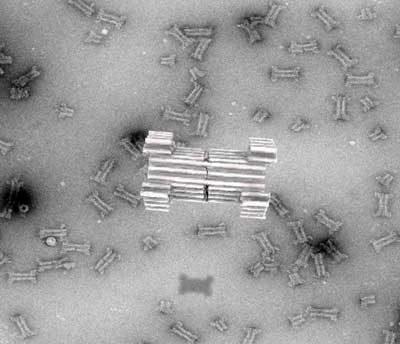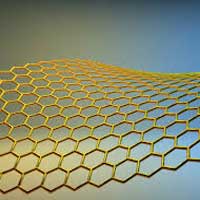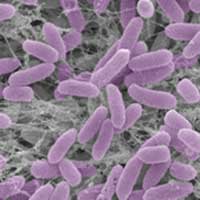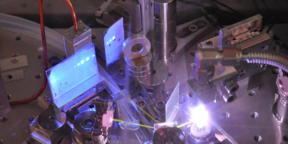Home > Press > Better studying superconductivity in single-layer graphene| An existing technique is better suited to describing superconductivity in pure, single-layer graphene than current methodsAbstract:Made up of 2D sheets of carbon atoms arranged in honeycomb lattices, graphene has been intensively studied in recent years. As well as the material's...
Researchers create synthetic nanopores made from DNA
Dec 13, 2019 (Nanowerk News) In 2015, the first commercial nanopore DNA sequencing device was introduced by Oxford Nanopore Technologies. Based on a synthetically engineered transmembrane protein, nanopore sequencing allows long DNA strands to be channelled through the central lumen of the pore where changes in the ionic current work...
Nanotechnology Now – Press Release: Tiny magnetic particles enable new material to bend, twist, and grab
Home > Press > Tiny magnetic particles enable new material to bend, twist, and grabThis object is made from a special material called "magnetic shape-memory polymer." It can bend and change shape in response to a magnetic field. CREDIT Allison Carter Abstract:A team of researchers from the Georgia Institute of...
Better studying superconductivity in single-layer graphene
Dec 13, 2019 (Nanowerk News) Made up of 2D sheets of carbon atoms arranged in honeycomb lattices, graphene has been intensively studied in recent years. As well as the material's diverse structural properties, physicists have paid particular attention to the intriguing dynamics of the charge carriers its many variants can...
A self-cleaning surface that repels even the deadliest superbugs
Dec 13, 2019 (Nanowerk News) A team of researchers at McMaster University has developed a self-cleaning surface that can repel all forms of bacteria, preventing the transfer of antibiotic-resistant superbugs and other dangerous bacteria in settings ranging from hospitals to kitchens. The new plastic surface - a treated form of...
Nanotechnology Now – Press Release: New laser technique images quantum world in a trillionth of a second: Technique captures a process that commonly causes electrical resistance in materials while, in others, can cause the absence of resistance, or superconductivity
Home > Press > New laser technique images quantum world in a trillionth of a second: Technique captures a process that commonly causes electrical resistance in materials while, in others, can cause the absence of resistance, or superconductivityUltrafast pulses of extreme ultraviolet light are created in a gas jet of...
Probing particles smaller than a billionth of a meter
Dec 13, 2019 (Nanowerk News) Scientists at Tokyo Institute of Technology (Tokyo Tech) developed a new methodology that allows researchers to assess the chemical composition and structure of metallic particles with a diameter of only 0.5 to 2 nm (Science Advances, "Ultrahigh sensitive Raman spectroscopy for subnanoscience: Direct observation of...
Nanotechnology Now – Press Release: CEA-Leti and Partners Demo Potentially Scalable Readout System for Large Arrays of Quantum Dots: Results Hold promise for Fast, Accurate Single-Shot Readout Of Foundry-Compatible Si MOS Spin Qubits
Home > Press > CEA-Leti and Partners Demo Potentially Scalable Readout System for Large Arrays of Quantum Dots: Results Hold promise for Fast, Accurate Single-Shot Readout Of Foundry-Compatible Si MOS Spin QubitsAbstract:Leti, a technology research institute of CEA Tech, and its research partners have demonstrated a potentially scalable readout technique...
Punching holes in opaque solar cells turns them transparent
Dec 14, 2019 (Nanowerk News) Researchers in Korea have found an effective and inexpensive strategy to transform solar cells from opaque to transparent. Existing transparent solar cells tend to have a reddish hue and lower efficiency, but by punching holes that are around 100 µm in diameter (comparable in size...
Nanotechnology Now – Press Release: Silver improves the efficiency of monograin layer solar cells
Home > Press > Silver improves the efficiency of monograin layer solar cellsNext-generation lightweight flexible monograin layer solar cell developed by TalTech researchers. CREDIT Professor Jüri KrustokAbstract:As a result of their two-year joint project, the materials researchers of Tallinn University of Technology have improved the efficiency of next generation solar...










